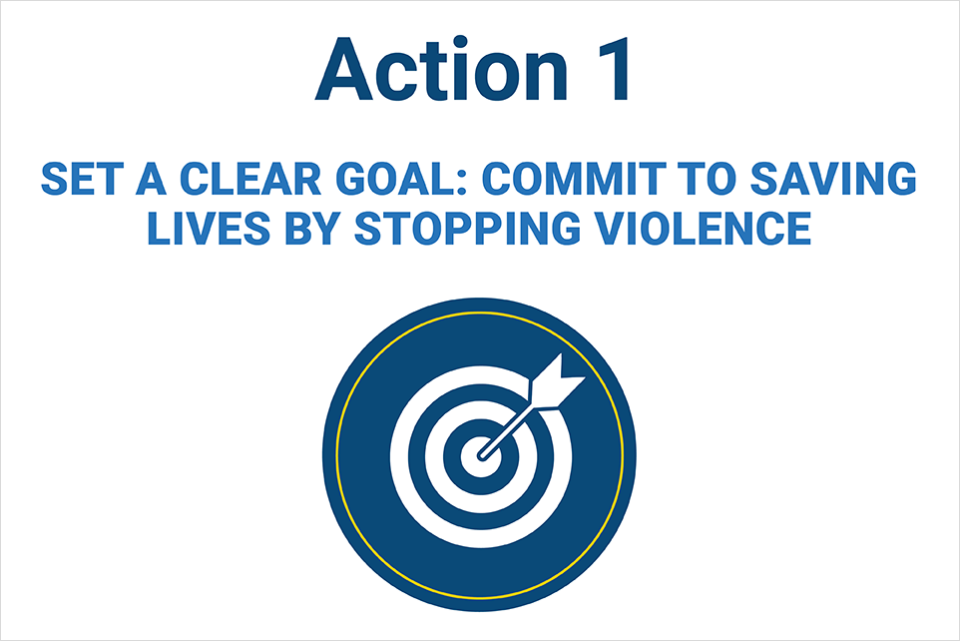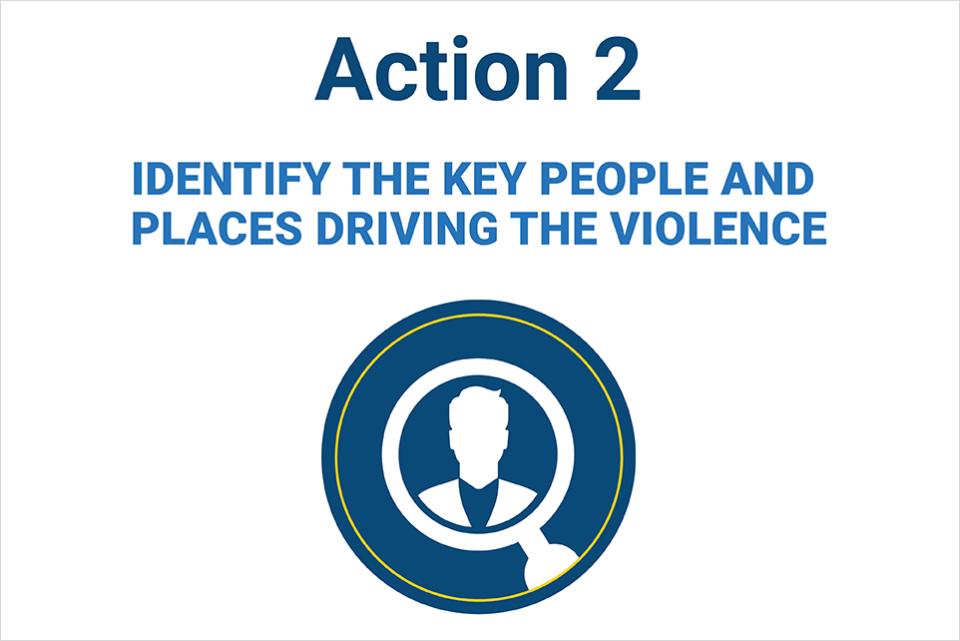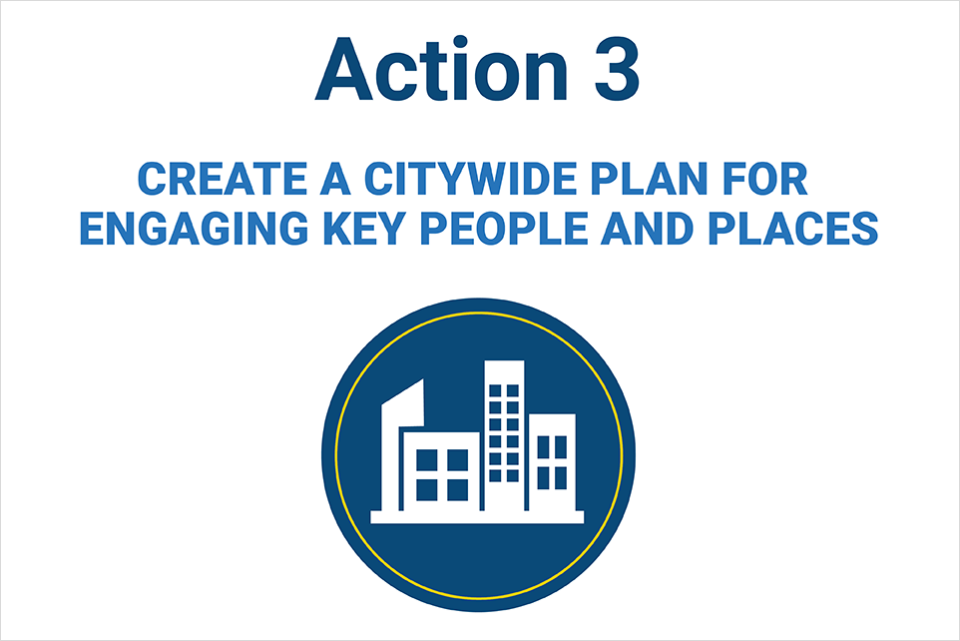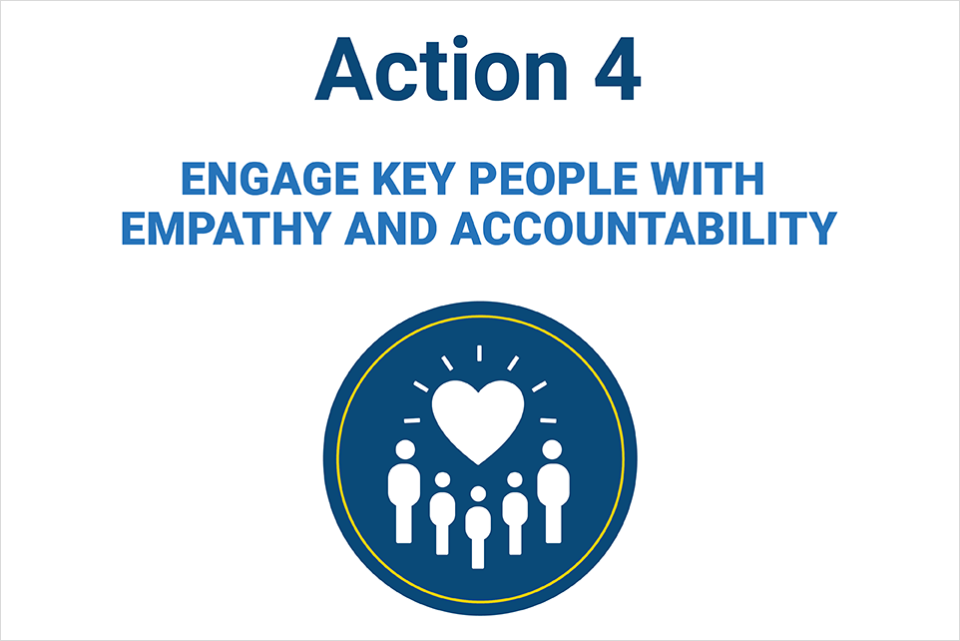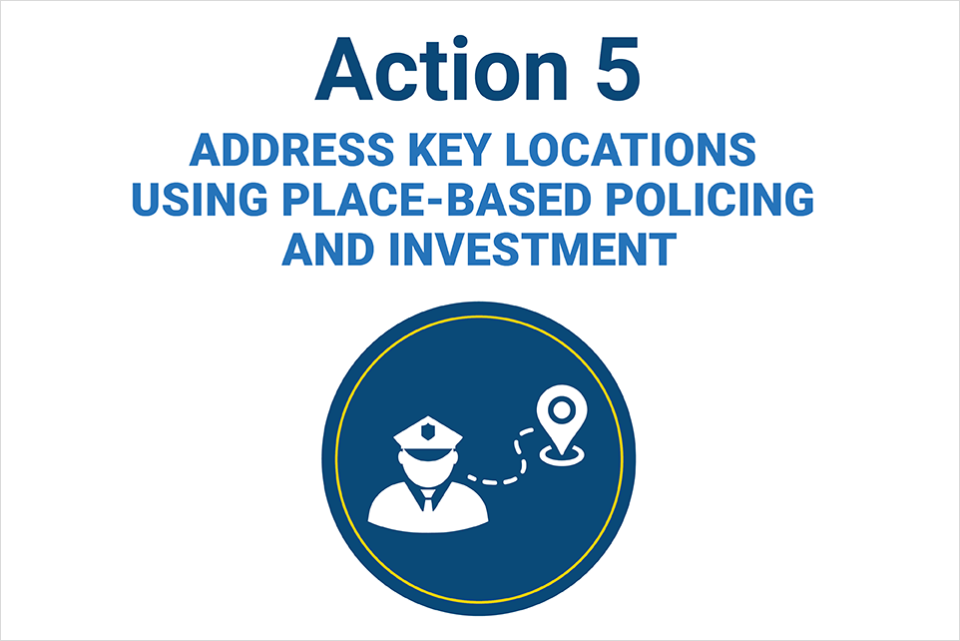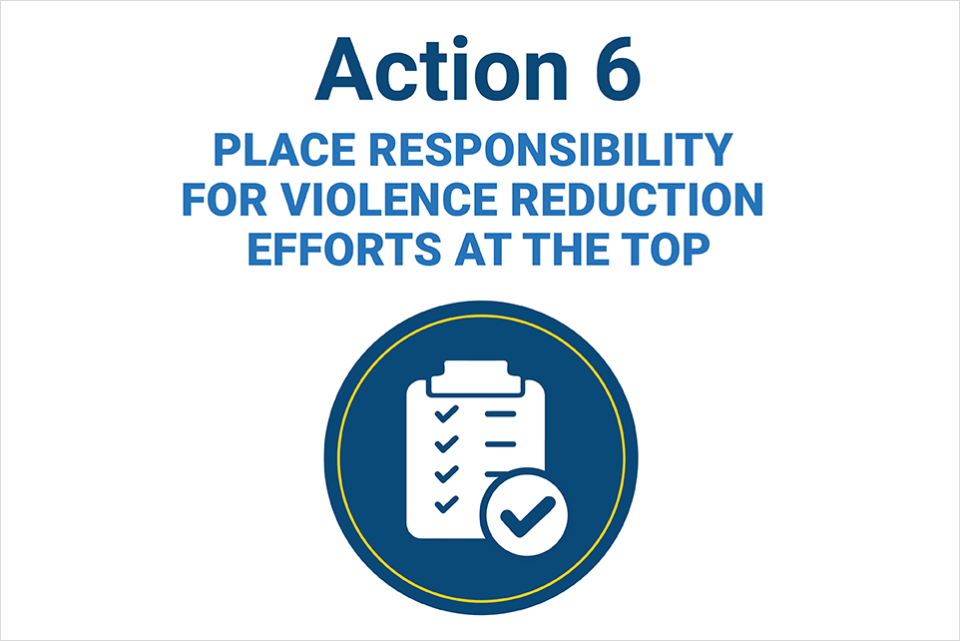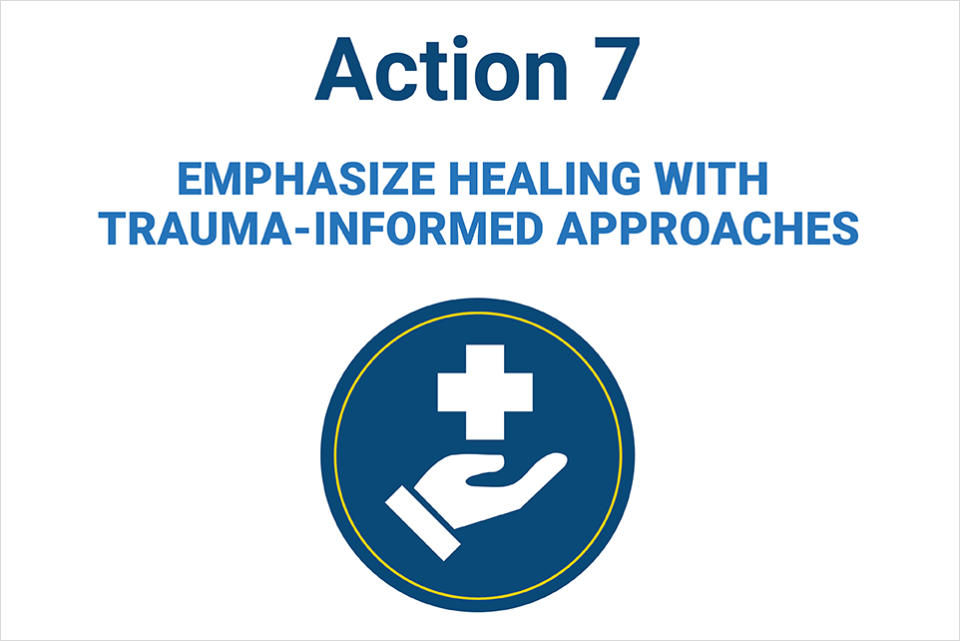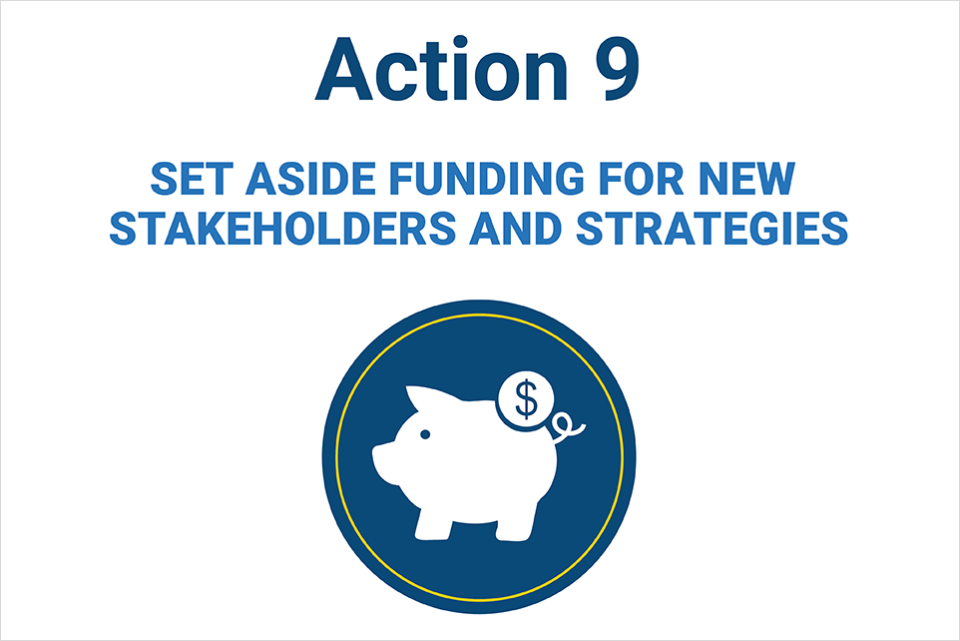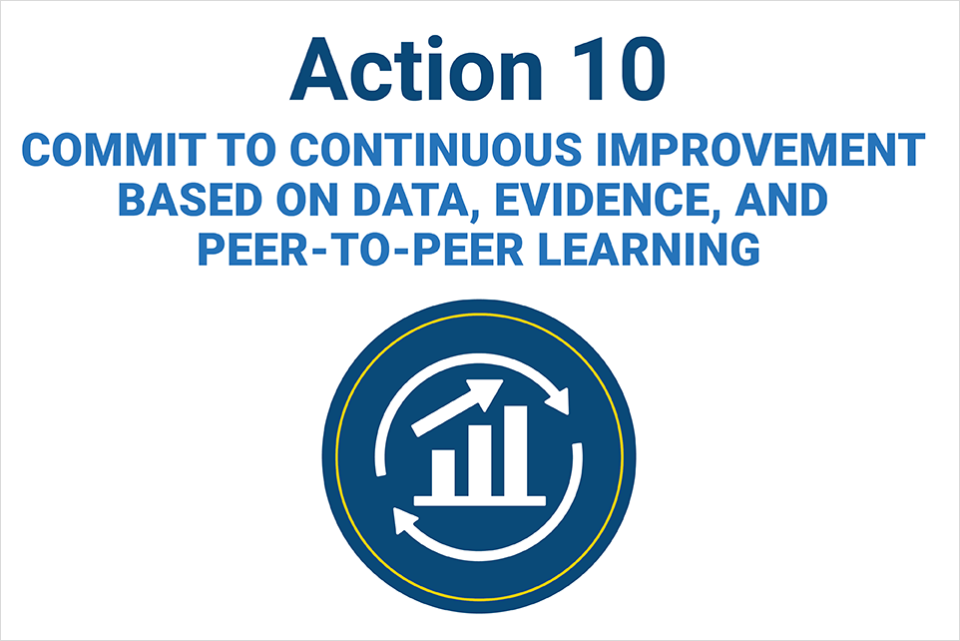In recent years, many cities, towns, and counties across the country have experienced substantial increases in community gun violence. While some localities have made progress in reducing violence, pressing concerns remain for residents, community and business leaders, law enforcement officials, public health providers, and more.
In response to these concerns, the Department of Justice (DOJ) has launched the Violent Crime Reduction Roadmap (the Roadmap) as a one-stop-shop to assist local jurisdictions in developing, implementing, and evaluating the right set of strategies to prevent, intervene in, and respond to acts of community gun violence.
Ten Essential Actions
The Roadmap is organized around ten essential actions to reduce community gun violence identified by the Council on Criminal Justice (CCJ) – an independent, nonpartisan think tank for the criminal justice field. In 2022, CCJ launched a Violent Crime Working Group representing a diverse array of experts from community organizations, law enforcement, the public health sector, and academia. The working group’s final report – Saving Lives: Ten Essential Actions Cities Can Take to Reduce Violence Now – summarizes its recommendations across ten key steps every jurisdiction should take to reduce violence.
Given the breadth of experience of the working group and the widespread uptake of its final report, DOJ has organized the Roadmap around the same ten essential actions, outlining how DOJ resources can support jurisdictions each step of the way.
The actions are as follows:
Roadmap Support for the Ten Essential Actions
For each action, the Roadmap lists relevant DOJ resources that can help jurisdictions stop violence and save lives. Key resources are identified first, followed by additional resources. These resources include grant funding, training and technical assistance, and more.
Grant Funding
DOJ provides funding to support violent crime reduction efforts through formula grants that are administered by state agencies and competitive grants that are awarded directly to governmental and non-governmental organizations. Grant funding opportunities are usually made available between November and March, with applications typically due 60 to 90 days after posting and awards generally made the following August and September. Current funding opportunities can be found on on this webpage.
Training and Technical Assistance
The Police Executive Research Forum (PERF) will provide no cost training and technical assistance (TTA) to support jurisdictions interested in implementing strategies outlined in the Roadmap and assessing their community’s specific needs and drivers of violence. In collaboration with the Office of Justice Programs' (OJP) Bureau of Justice Assistance (BJA) and a cadre of subject matter experts, PERF will coordinate TTA services designed to enhance jurisdictions’ capacity to reduce violent crime and promote community trust.
DOJ also offers other TTA resources in a wide variety of areas relevant to violent crime reduction. Through TTA, DOJ offers specialized expertise to help organizations solve problems and build capacity, including direct connections to subject matter experts as well as training and “how-to” materials. Throughout the Roadmap, the TTA resources are linked to their web-based resources, which often include webforms or contact information on how to access these resources. Some TTA resources are reserved for grantees, while others are available to the general field. In most cases, these TTA resources are available at no cost to jurisdictions.
How to Use the Roadmap
DOJ’s Roadmap can be used in at least two ways. It can be used to guide new anti-violence efforts by following the actions in more or less sequential order, or it can be used as an assessment tool or checklist for existing initiatives addressing community gun violence. Practitioners and policymakers should attempt, to the extent possible, to incorporate all ten actions into their efforts to address violent crime. For each action, DOJ lists the most relevant resources first, followed by other helpful resources. In partnership with OJP's BJA and a cadre of subject matter experts, PERF will offer TTA support to assist jurisdictions interested in implementing some or all of the Roadmap actions.
It should be noted that the Roadmap is not intended to be comprehensive – it does not spell out every action that jurisdictions can take to combat community gun violence. Instead, it highlights measures that jurisdictions can start right away to make an immediate impact on the problem. The Roadmap’s actions should not be considered a substitute for broader, institutional and systemic strategies to address the underlying causes of violence.
Roadmap Updates
DOJ continuously engages the field to ensure its resources align with current research and practice. As new resources relevant to community gun violence within DOJ and across the federal government are identified, they will be added to the Roadmap to support the ongoing safety needs of communities.
OJP thanks the Center for the Study and Practice of Violence Reduction at the University of Maryland, College Park, for their contributions to this important effort.


